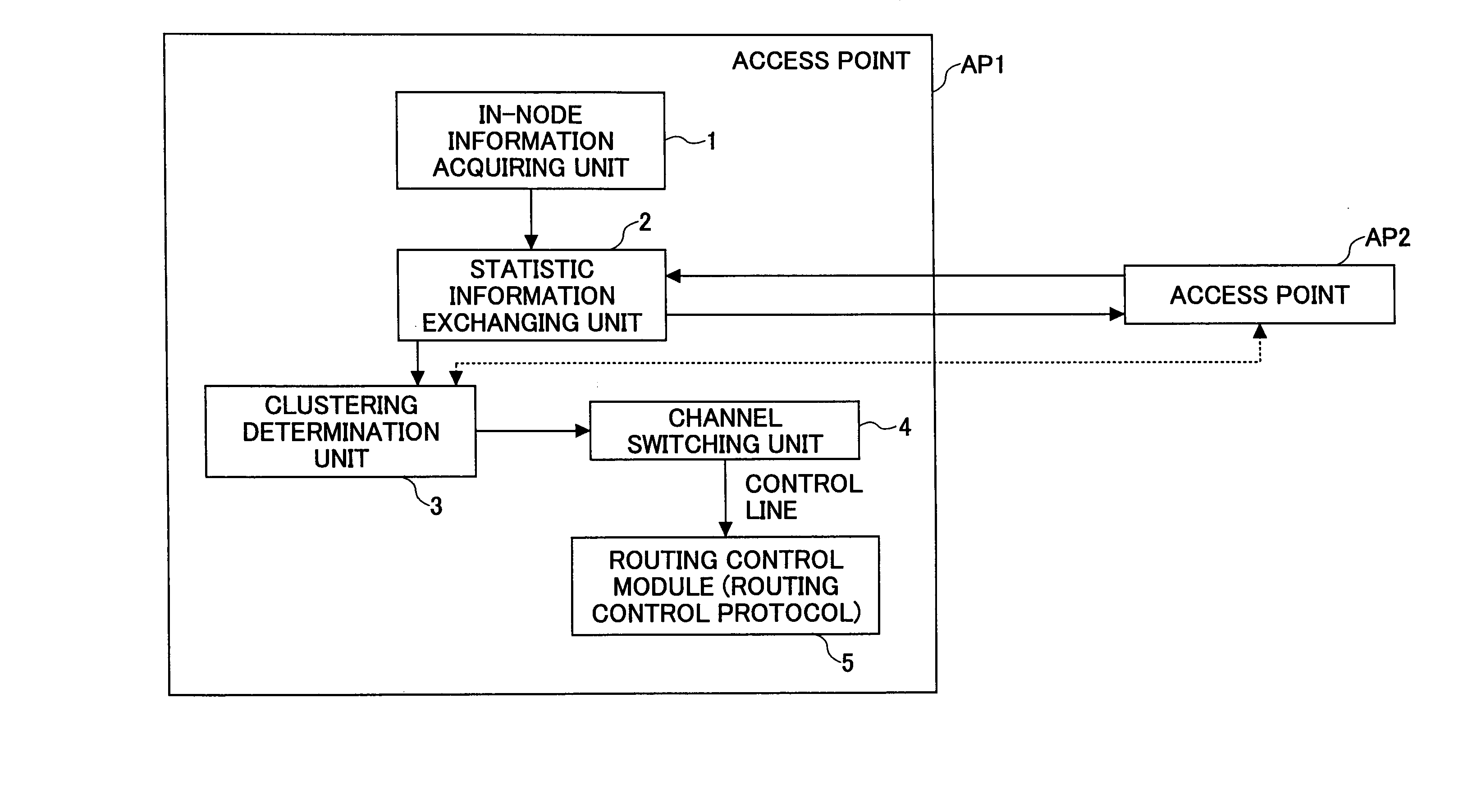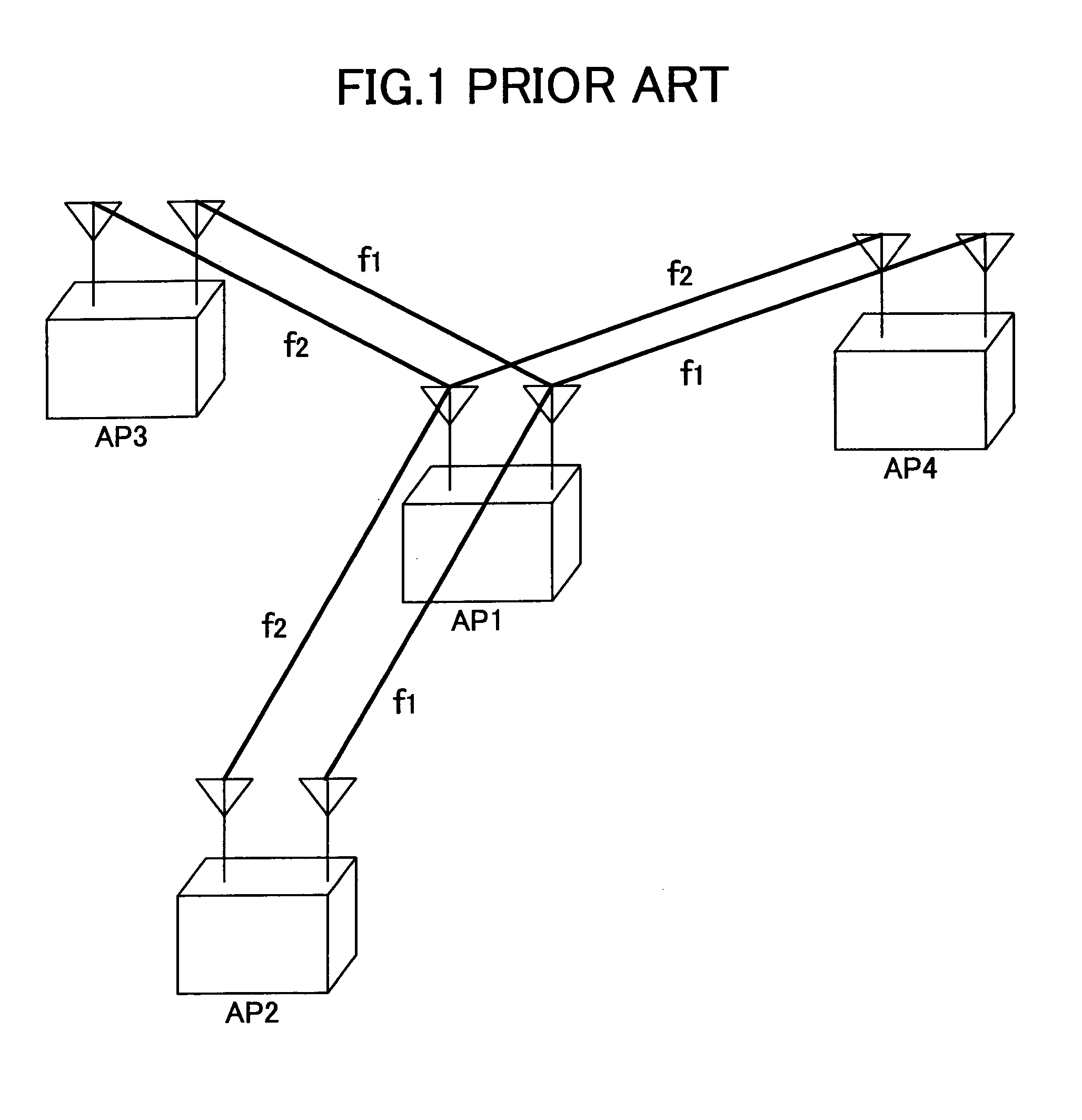Channel allocation for access point in mesh network
a mesh network and access point technology, applied in the field of channel allocation technique, can solve the problems of low throughput, large amount of transmission often occurring across clusters, and inability to carry out high-rate communication between access points across clusters, so as to improve network efficiency and increase throughput in the mesh network
- Summary
- Abstract
- Description
- Claims
- Application Information
AI Technical Summary
Benefits of technology
Problems solved by technology
Method used
Image
Examples
Embodiment Construction
[0044] The preferred embodiment of the present invention is described below in conjunction with the attached drawings. In the embodiment, an application of the invention to an IEEE 802.11 wireless LAN access point is used as an example.
[0045]FIG. 4 is a schematic block diagram of an access point to which a channel allocation technique of the present invention is applied. This block diagram shows the clustering-related functional structure only, and other functions of the access point are omitted.
[0046] In FIG. 4, access point AP1 has an in-node information acquiring unit 1 that acquires the node information of the access point AP1 itself; a static information exchanging unit that exchange static information with other access points (e.g., AP2); a clustering determination unit 3 that determines a node (an access point) to be clustered based on the in-node information and the exchanged statistical information, and requests for clustering to said other node to obtain approval as nece...
PUM
 Login to View More
Login to View More Abstract
Description
Claims
Application Information
 Login to View More
Login to View More - R&D
- Intellectual Property
- Life Sciences
- Materials
- Tech Scout
- Unparalleled Data Quality
- Higher Quality Content
- 60% Fewer Hallucinations
Browse by: Latest US Patents, China's latest patents, Technical Efficacy Thesaurus, Application Domain, Technology Topic, Popular Technical Reports.
© 2025 PatSnap. All rights reserved.Legal|Privacy policy|Modern Slavery Act Transparency Statement|Sitemap|About US| Contact US: help@patsnap.com



